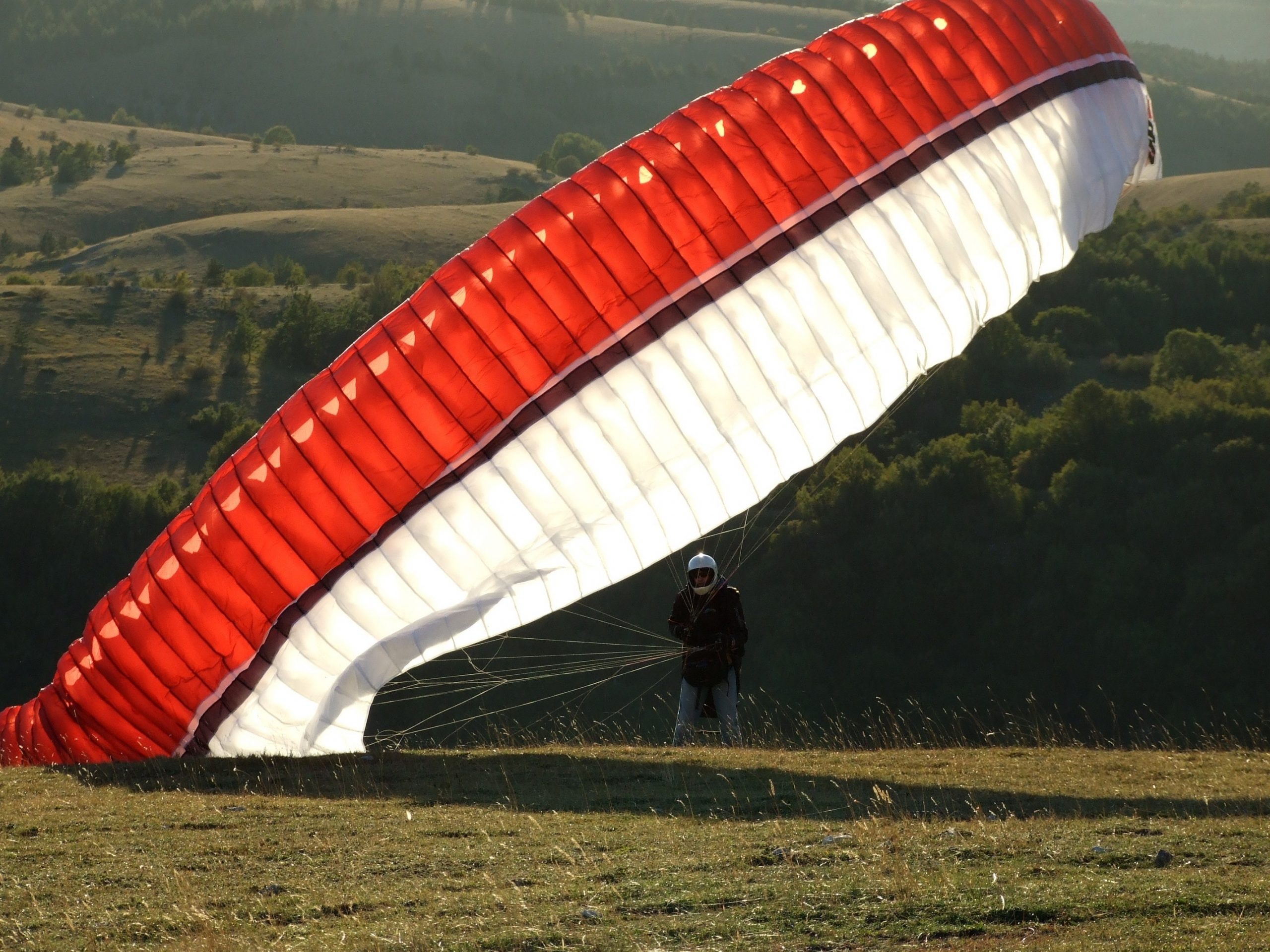Paragliders Association, Singapore
Home of the Singapore Freeflyers
Learning the Basics
Ground Handling
Now, before one learns how to fly, one learns how to handle the wing on the ground. The purpose of this is to get familiarised with the paraglider wing and learn what it does with the relative safety of being on the ground.
This video gives you an idea of what ground handling is like.

Why do ground handling? I prefer to fly!
This section is for those who have already learnt and received their paragliding training. Some people question the point of paragliding ground handling.
Peter Cröninger published an article in the member’s magazine “DHV Info” of the German hanggliding and paragliding association DHV in January 2013:
“If we try to balance a pole orthogonally above our head we have to move our hand at the lower end in the direction of the tilting upper end. Similar is the situation during ground handling. As the automatic stabilization of the wing due to the low center of gravity is not working while on the ground, the pilot has to move activily to maintain in the center of the wing (pressure point). Additionally, the lines need to be tense, as only then the wing can be maintained under control. Those two factors lead to a complex motion requirement for the pilot.”
Ground handling is for all pilots, even if they are very experienced. It is a crucial training for being able to control the wing in different and changing wind conditions perfectly. This helps a lot towards becoming a safe pilot and being confident at takeoff, landing and when extreme situations happen in flight.
Safe practice of Ground Handling in Singapore
All the places where we practice ground handling in Singapore are shared with public. Our safety guidelines shall be read, understood and implemented by every pilot – wether member of PGSG or not. We wish to have a relaxed interaction with public.
Please read the document below in its entirety.
“Where can I go for a 2 weeks course to get a paragliding license?” “What’s the best way to learn?” this article will address some of the common questions on learning to fly and the dynamics involved.
1. DIY and improvise – From Youtube to Vimeo, there are arrays of resources in the web. Whilst they are mostly helpful, one should not replace this with proper training and attempt to learn by DIY. Paragliding might seems easy, but embed within is vast amount of knowledge in precautionary measures in handling adverse situation. It’s great when everything is smooth and ignorance is bliss. However knowing what could go wrong and how to handle those situations will make a difference between life and death. On paragliding gear, one must not underestimate dangers even while ground handling. Severe accidents have happened with pilots improvising with harnesses/carabiners etc that are not meant for paragliding.
2. Trial before you commit – You may want to try a tandem paragliding flight first. it is a great way to enjoy the full paragliding aerial experience, without having to learn how to launch and control the paraglider yourself. The tandem pilot will take care for you. Do ask the pilot further details if you wish so. All schools can provide tandem flights but do ensure the tandem masters have the required license/certifications.
3. Same same but not the same – Many pilots-to-be are drawing similarity to extreme sports such as scuba diving where one can complete their basic training in 3-4 days and “licensed” to do open water dives. However paragliding being an unpowered aviation activity, the learning journey is more complex with a lot more variation. From flying in coastal sites to mountains inland, from cross wind take offs to tail wind– different sites and weather patterns poise a different matrix of complexity. A 3-4 days or even 2 weeks of training could provide a foundation, but does not provide adequate training for one to fly independently. Taking Switzerland/Japan as a gauge, one needs to accumulate more than 80 flights spanning 12-18months to get a solo license.
4. Which school is the best?– There are a lot of great instructors out there, with many years of teaching experience. However by virtue of the complexity involved (as stated above), no super instructors can touch stone to gold. Hence it is important to set expectation right in what you can achieve. In addition, we’ll probably learn from more than one instructor in our learning journey and don’t be surprised that different instructors might even contradict each other at times. There are many schools of thoughts and one’s right does not imply that the other is wrong. Therefore is it important to digest and internalize what we have learnt.
5. Basics 1-2-3 – An integral part of learning how to fly is ground handling. Handling of glider on the ground is not only important practice for launch, it also trains pilots to control the glider actively. As a guide, even experienced pilots also need to practice regularly on ground to maintain muscle memory and feel of the wing. Whilst Singapore does not have any flying site, One can practice ground handling extensively and we strongly recommend one to practice and master this before going for any overseas trip. (Many beginner pilot’s take offs fail because of Pre-flight anxiety. But repetition of this practice on ground helps to boost confidence and avoid accidents in training hills).
6. Comradeship – Like in many other sports, it’s good to have buddies. However this is even more important for paragliding in Singapore as it is:
a. Easier to arrange logistics to fly in a group.
b. paragliding involves a lot of theoretical knowledge. Books are good, but group discussion with fellow pilots is far more effective.
c. Guidance from certified instructors is a must. However unless we relocate overseas, we cannot stay with them forever. Hence it is important to supplement this with advice and coaching from experienced flight mates – that is with you in your learning journey and know your strength/weaknesses.
In summary, to learn paragliding in Singapore, this is what we recommend:
1.Do as many ground handling practice as possible and learn as much theory (through discussions and workshop) as possible in Singapore.
2. Go to one or more training schools as listed in sites. (Be prepared to return for multiple trips).
3. Join a local community to fly in a group and start logging your flights (Not just numbers, but what you did right or wrong).
4. Be committed, maintain the passion to fly, ground handle and be involved in discussions as regular as you can. It is a very long journey.
5. At this level, certification can be acquired in many schools (listed in this page) through 1-2 days accreditation. End of the day, it’s not in paper qualification that matters, but the safety mindset and flying skills that one has acquires.

